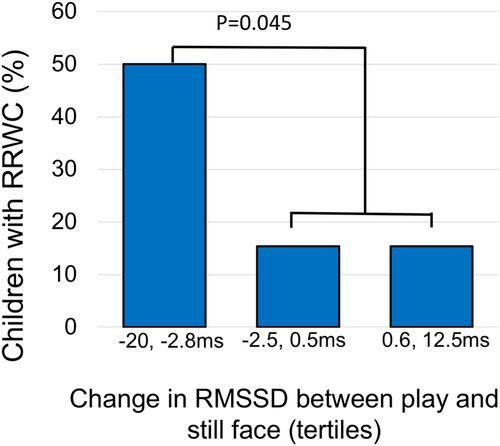Figures & data
Table 1 Characteristics and HRV Outcomes Among Children Without and With RWWC
Figure 1 Prevalence of rhinorrhea/watery eyes without colds (RWWC) at age 3 months by tertile of change in heart rate variability (root mean square of the successive differences: RMSSD) measured between play and still-face challenge (n=38). Children with the greatest decrease in HRV were the most likely to have had a report of RWWC.


